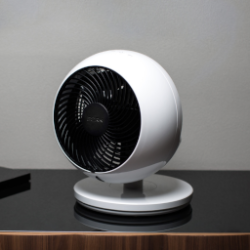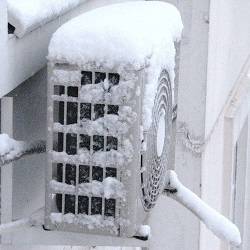Convector, built-in window sill - economy version of the housing heating
Convector is a specialized device for heating, in which heating elements are installed. If it is embedded in a window sill or window parquet, then the cold will not penetrate into the room, and it will be possible to effectively use the heating in the house. In addition, it is the best option for rooms with high humidity levels. In this article we will consider what the convector is built into the window sill, as well as what features and advantages this design has.
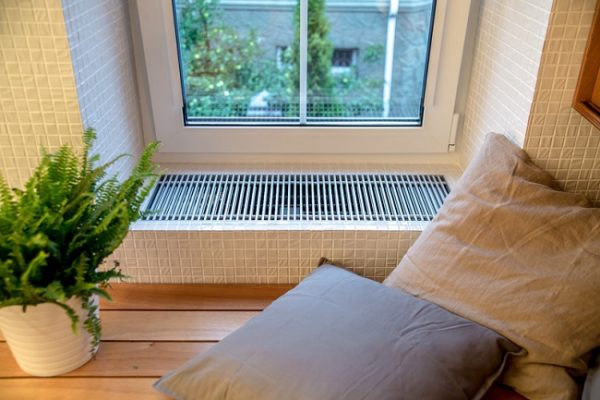
Content
Advantages and disadvantages
The main advantage of this heating equipment can be attributed to it. versatility. The device performs well in both industrial and residential buildings. Works with autonomous and centralized heating.It can be used in dry rooms, and also in the conditions of the increased humidity.
The most obvious advantages convector heaters (electrical, gas, water) - this:
- compactness and invisibility in the interior;
- convenience of placement;
- safety and efficacy;
- quick warming of the dwelling;
- durability and strength;
- removal of condensate on the windows;
- variety of complete sets.
An important disadvantage of such devices is embedding complexity under the established window sill.
Purpose and design of the device
The unit is used for buildings with large window sills. It is completed with one or two heat exchangers, as well as an electric fan. This is necessary for heating homes and removing condensate from the windows.
Attention! The action of the convector directly depends on the position of the fan relative to the window.
It is equipped with a special moisture removal system. Harmoniously and beautifully complements each interior.
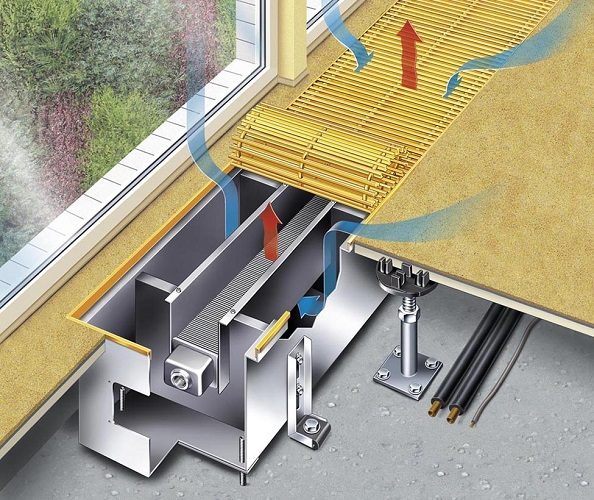
The scheme of action covector embedded in the window sill
The main components of the convector:
- housing and heater;
- fans;
- thermoregulation system.
In specialized stores you can find convectors with and without complete window sills.In the first case, we are dealing with a ready-made device that only needs to be installed and connected. The second option requires sidebar windowing and is considered more complex. There are also vnutripolnye and baseboards models.
Principle of operation
So, the case itself is located directly below the window. In the casing there are some tubes inside of which coolant flows. Through a special grill comes out warm air and then placed in the sill itself. Then the heat acts on the glass, removing the condensate. Thus, the window will always be dry, regardless of the weather outside.
Attention! In small rooms the convector can be used as the only heating means.
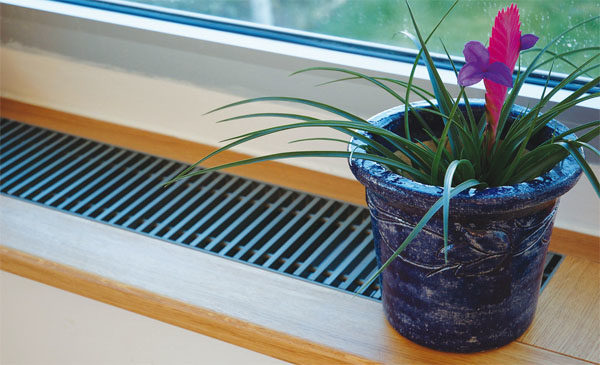
The unit provides a comfortable temperature and optimum humidity. The air blown out of all the openings of the heater is warm but never hot. Therefore, you can safely leave the flowers on the surface of the window sill, with the exception of plants that prefer cold.
Equipment installation
First of all, you should pay attention to sill width. It is desirable that the measurements were done by a professional. The master will dedicate you to the particular installation and application of the device in the room.After installation, the visible part of the window-sill convector will be only a decorative grille, the client can choose the texture and color from itself.
Conclusion
Convector built into the window sill has many advantages, including: heating quality, safety, reliability, compactness of placement, as well as the absence of condensation on the windows. If you decide to resort to this method of heating, do not forget that because of the complexity of installation, measurements and installation work must be carried out by a qualified technician.

/rating_off.png)








